If you don’t have time to make it to the gym often or you find yourself traveling a lot, you may want to invest in a Suspension Trainer like the Jungle Gym XT, CoreX or TRX.
The Suspension Trainer is a great home workout and travel tool because it is easy portable and can be stored almost anywhere. Plus it is easy to use and can be a great workout for anyone from the beginner to the advanced lifter.
And while you can get a great full-body workout done on the Suspension Trainer, it is also a great way to isolate and work our big muscle groups like the glutes.
If you are looking to get in a great glute workout, but don’t have access to any weights, try these 5 Suspension Trainer Glute Exercises.
5 Suspension Trainer Glute Exercises
1. Balance Lunge – This is a great unilateral move to improve your balance, stretch your hips and work your glutes. Because you are focusing on one leg at a time, it is a great exercise to help you correct imbalances as well!

To do the Balance Lunge, place the toes of one foot into a suspension trainer strap. The shorter the strap and the higher your foot is from the ground, the harder the move will be. Make sure that you have the strap at a height that allows you to perform a full range of motion. It doesn’t have to be super high for this move to really make you work!
If you need to, hop out on the other foot so you are in a nice wide stance with your back foot up in the strap.
Then sink down into a lunge, dropping your back knee toward the ground. Really sit back into the lunge. Make sure you aren’t going forward and that your front heel is down. Also make sure your chest stays up and your back is flat. Do not round forward as you sink into the lunge.
You should feel a nice stretch in the front of the leg that is back when doing this move.
If you are really struggling to balance, hold the other suspension trainer strap in your hands. Complete all reps on one side before switching.
Slow down the tempo of the move to make it harder.
2. Side Balance Lunge – A great move to work your glutes as well as your adductors.
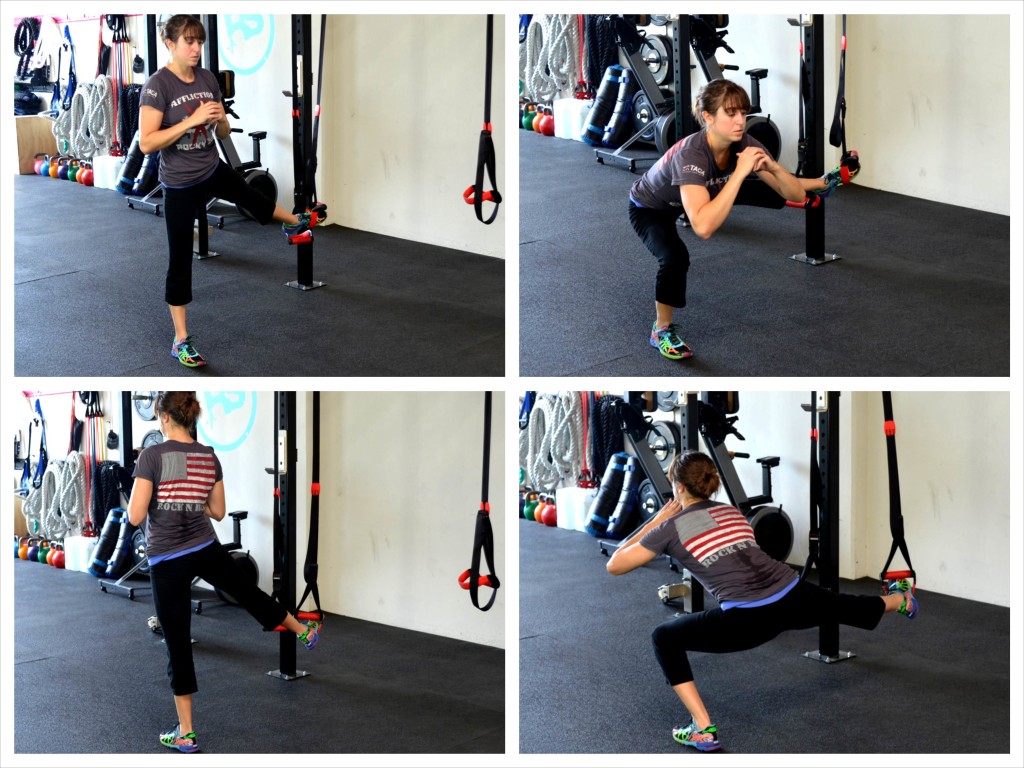
To do the Side Balance Lunge, place one foot on its side in a suspension trainer strap and face to the side. Your leg should be out straight to the side in the strap.
Then bend the standing leg and push your butt back as you sink down into a lunge. Let the leg with the foot in the strap slide out to the side as you sit back and down.
Keep your chest up. You may hinge forward a bit as you sink but do not let your back round.
Then, driving through the standing heel, come back to standing, pulling the leg in the suspension trainer back in toward your standing leg.
You will feel your adductors work to pull the leg back in. Do not bend the leg in the suspension trainer. Also make sure to squeeze your glutes as you come back up to standing.
Complete all reps on one side before switching.
Beginners may want to hold the other strap in their hands to help them balance.
Make sure that you don’t put the strap for your foot up too high. The height of the strap will be very dependent on your hip mobility.
3. Single Leg Squat – Another great unilateral move to work your legs and correct any imbalances because your legs are working independently.
This is also a great move to help you work up to the pistol squat. It will help you build the leg and core strength needed for a full pistol.
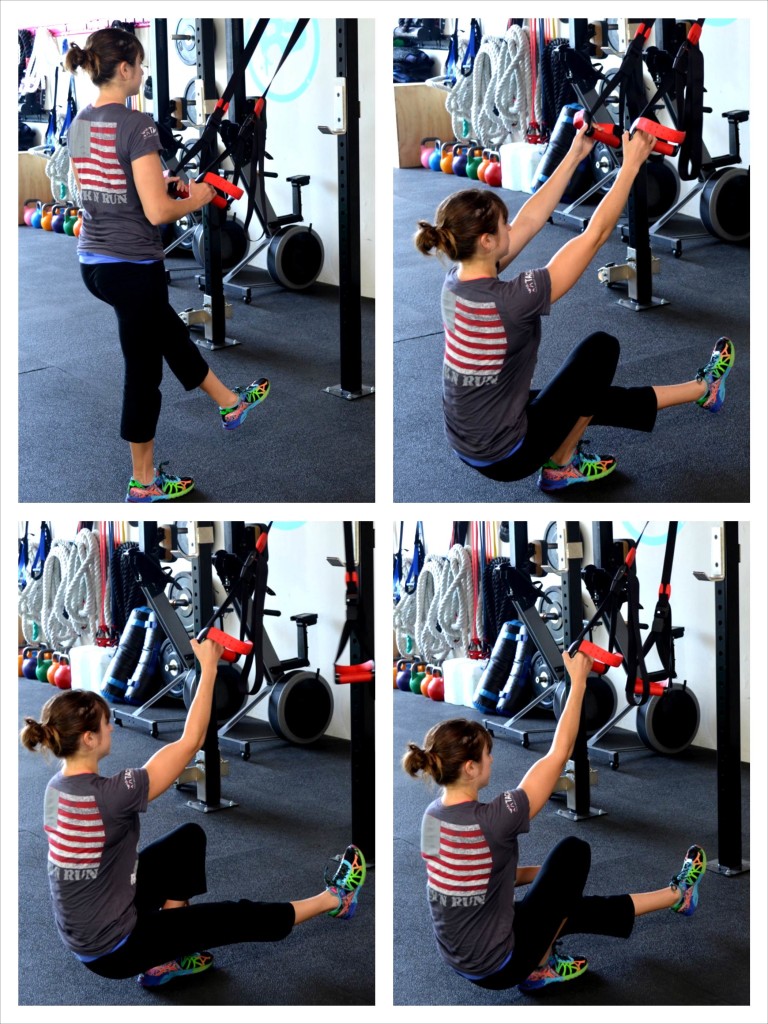
To do a Single Leg Squat, grab a suspension trainer strap in each hand and step back so there is a little tension in the straps. Then lift one leg out straight in front of you so you are balanced on one foot.
Sit your butt back and down to squat as low as you can while keeping your standing heel flat on the ground and your chest up. Then driving off the heel on the ground, stand back up.
Do not lean way forward or touch your raised foot to the ground to help you come back to standing. Only sit down as low as you can control and stand back up. If your heel starts to come off the ground, you don’t have the mobility to go that low or you need to focus on sitting back and down.
The lower you go in the squat, the more advanced the move will be.
Also, to advance the Single Leg Squat, you can hold only one strap. Holding one strap in the opposite hand from the standing leg gives you a bit more balance than holding a strap in the same hand as the standing leg.
Make sure though that you engage your core and can maintain a full range of motion with your heel on the ground even holding just one strap. Don’t do a harder variation if you can’t complete a full range of motion properly.
Complete all reps on one side before switching. Also, only use your arms as necessary. Do not turn this into an upper body exercise.
If your arms are doing most of the work, you need to regress the movement and maybe not go as low.
4. Single Leg Lunge – A great balance lunge and another single leg movement. This move is a great variation of the single leg squat and potentially a better exercise for anyone that sits all day since it involves more hip extension after so much hip flexion sitting at the computer all day.
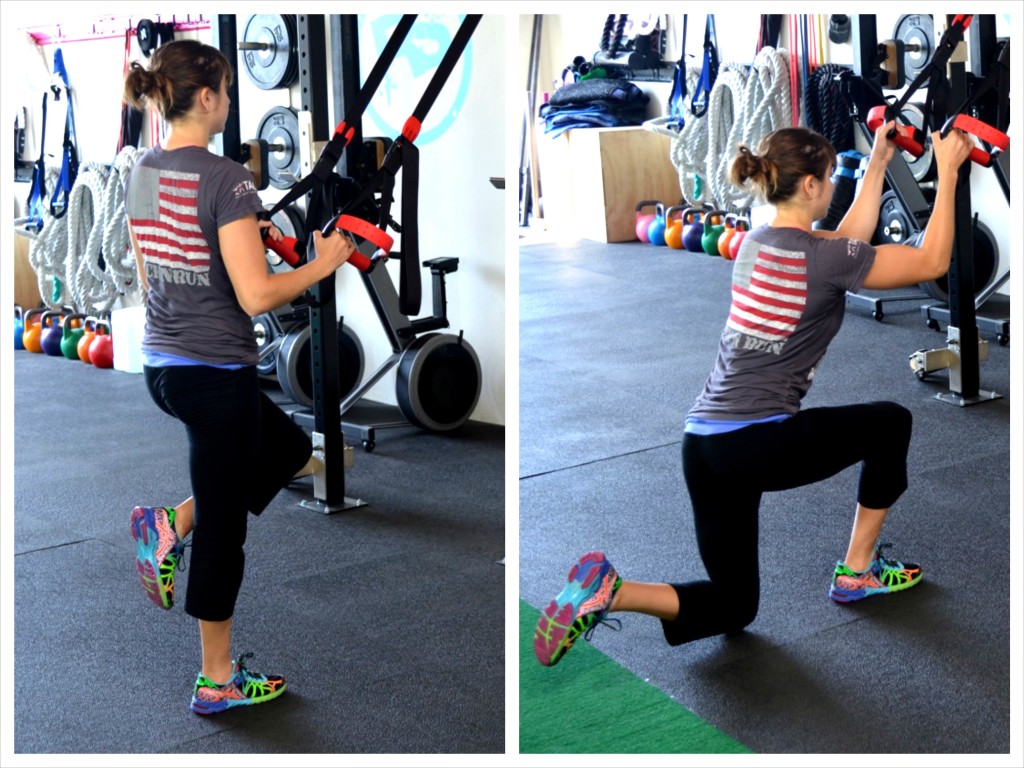
To do the Single Leg Lunge, hold a strap in each hand and step back so that there is tension in the straps.
Then stand on one foot and bend the other knee bringing your foot up toward your butt. You want to drop the knee of the back leg down to the ground without touching your foot down.
Sit your butt back and hinge over, dropping that back knee down to the ground. You want to make sure you are sitting back and driving through that standing heel. Do not rock forward and come up onto your toes.
Also, make sure you don’t “swing” back on the straps. You want that knee to be over your ankle/foot.
Touch your knee down then drive through your heel to come back up to standing. Squeeze your glutes at the top.
Use the suspension trainer to help you balance and get back up, but do not turn this into an upper body exercise. Use your arms only as needed!
Complete all reps on one side before switching to the other leg.
Beginners may not be able to go all the way down and touch their knee to the ground. Start with the range of motion you can control while feeling your glutes work.
Advanced exercisers may want to slow down the tempo to make this move harder or even hold only one suspension trainer strap.
5. Glute Cherry Bombs – This move is a great glute bridge variation that also really works your glute medius and got its name from the fact that the leg movement looks like the leg movement in the core exercise Cherry Bombs.
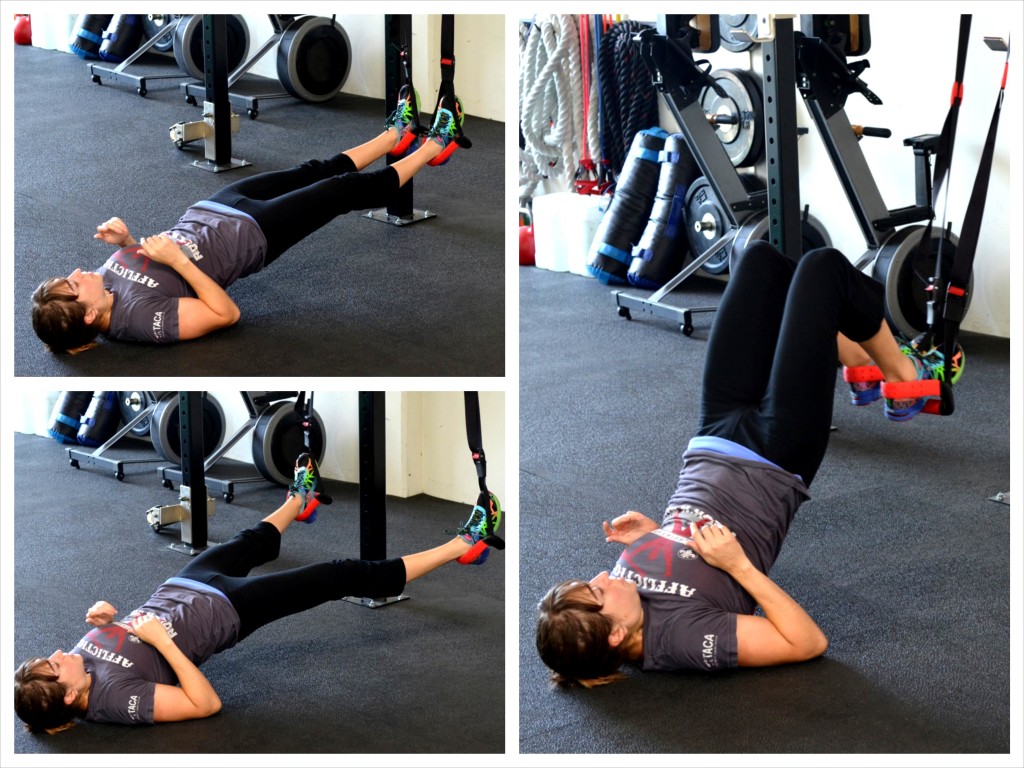
To do the Glute Cherry Bomb, place your heels in the suspension trainer straps and lie on your back on the ground.
With your legs out straight and your feet close together, bridge up, squeezing your glutes and driving through your heels. Keep your core engaged so you don’t hyperextend your low back.
Then curl your heels in toward your butt while maintaining the nice high bridge. Keep your glute engaged.
Straighten your legs back out then and, keeping the nice straight bridge, move both feet out laterally, opening your legs up.
Keep your hips up high as you spread your legs. Feel the outside of your butt work to open your legs up.
Then bring your feet back together and repeat, curling your heels in toward your butt.
This is an advanced movement. Beginners may not want to include the curl or may only want to do a single leg curl instead of the double leg curl.
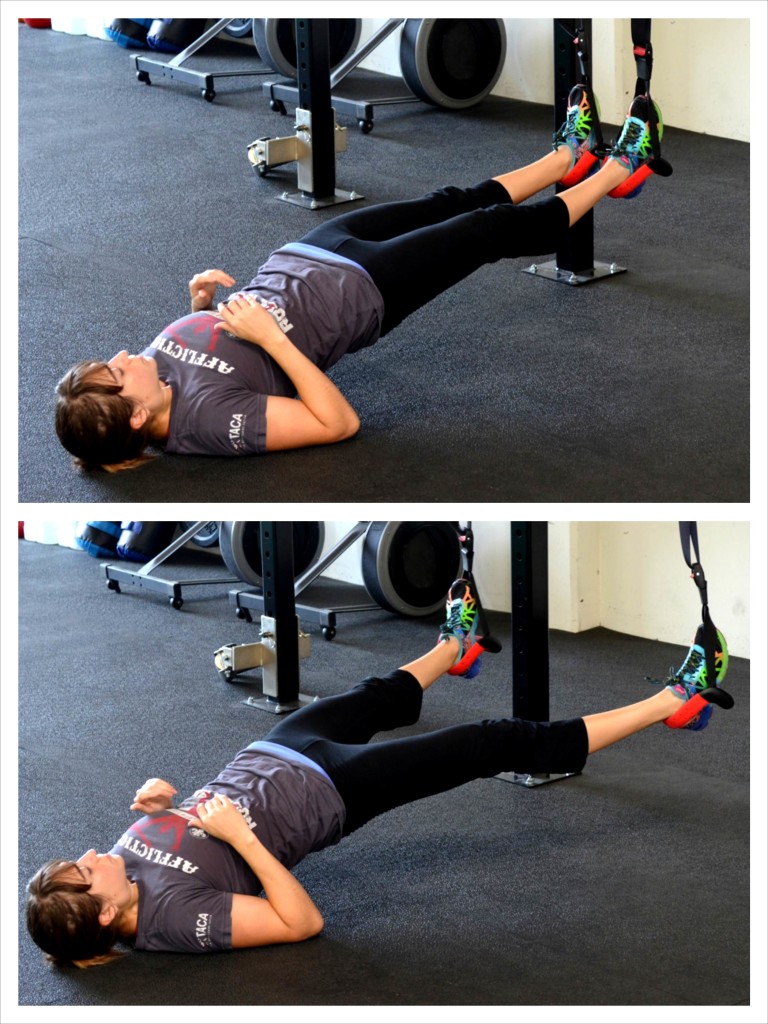
BONUS:
These two bonus moves are great bridge variations as well to really work your glutes and hamstrings.
Glute Bridge and Curl – This is a great move to really blast the hamstrings while working your glutes. Here are full instructions on how to do the Glute Bridge and Curl. There are so many ways to modify this movement anyone can do it!
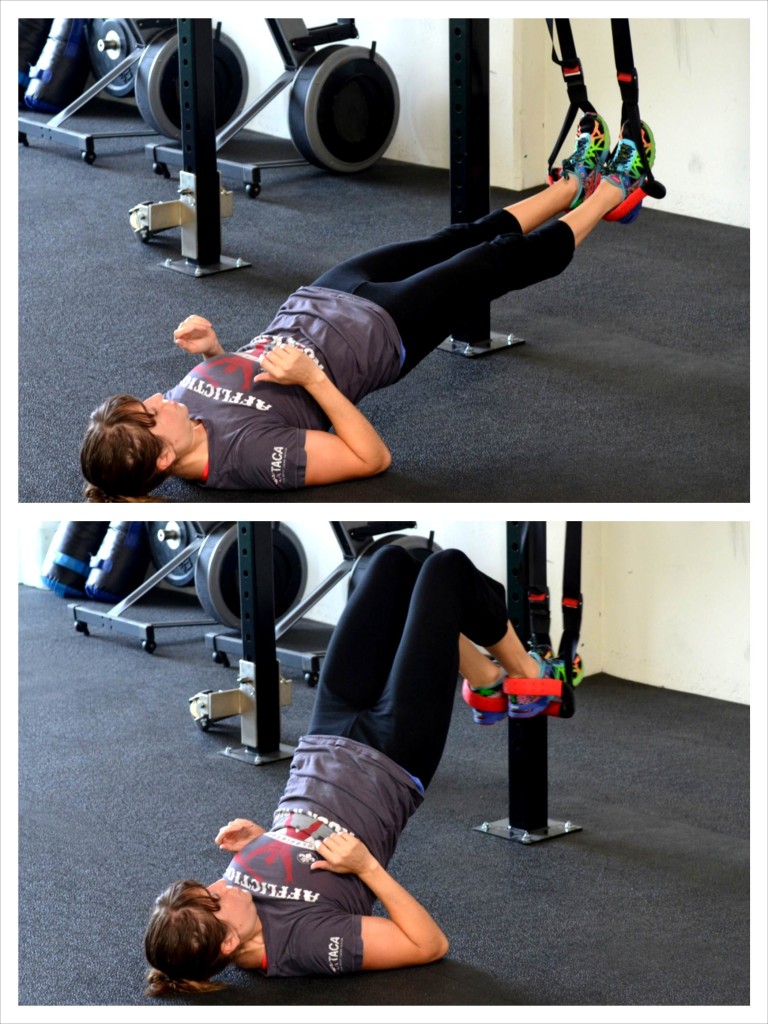
Straight Leg Bridge – The Straight Leg Bridge is a great basic glute bridge variation that also really works the glutes. Anytime you do a straight leg variation, you are going to engage the hamstrings more, be it a straight leg bridge or a straight leg Reverse Hyper. For tips on how to do the Straight Leg Bridge, check out these 10 Suspension Trainer Exercises.
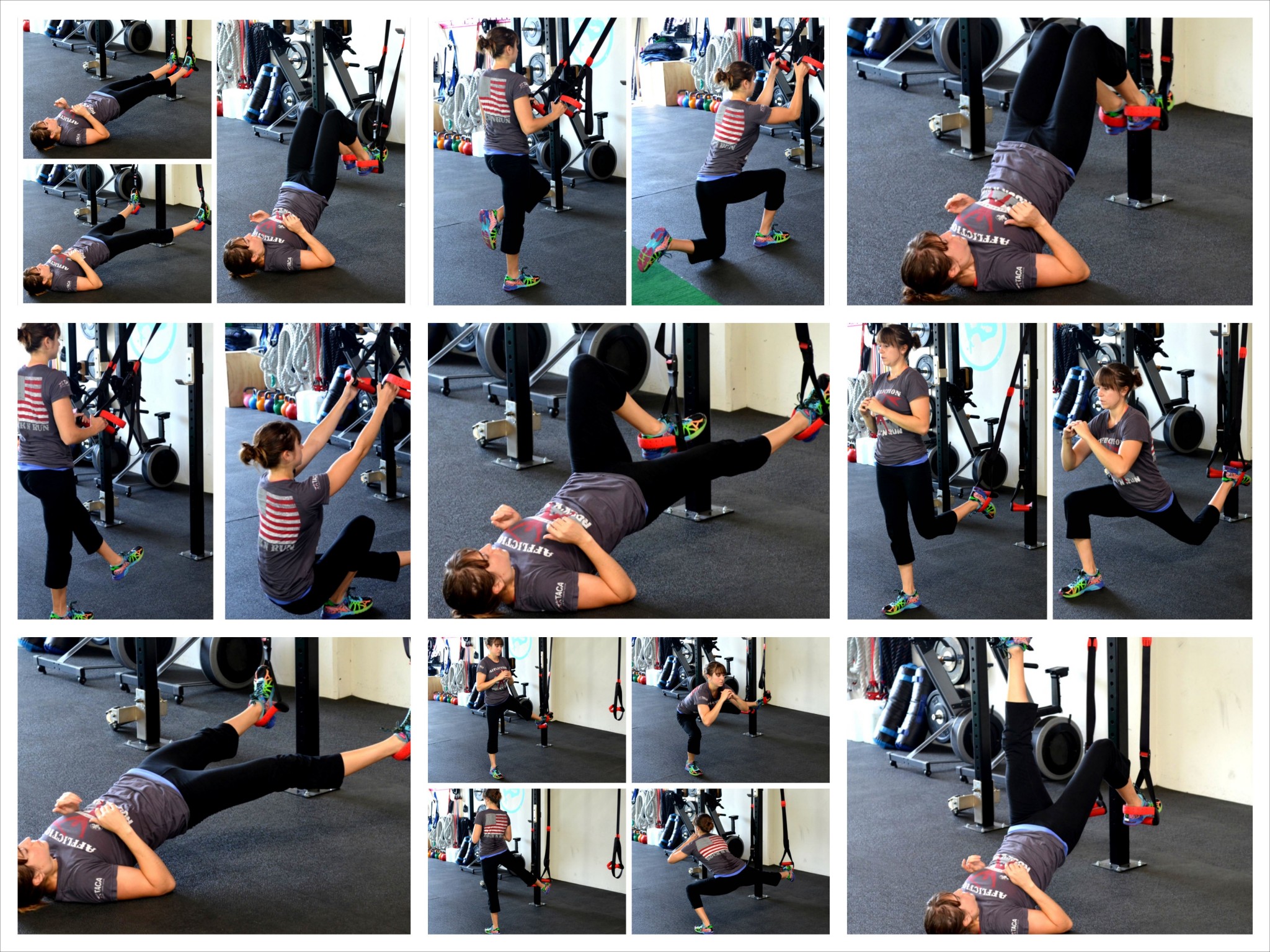
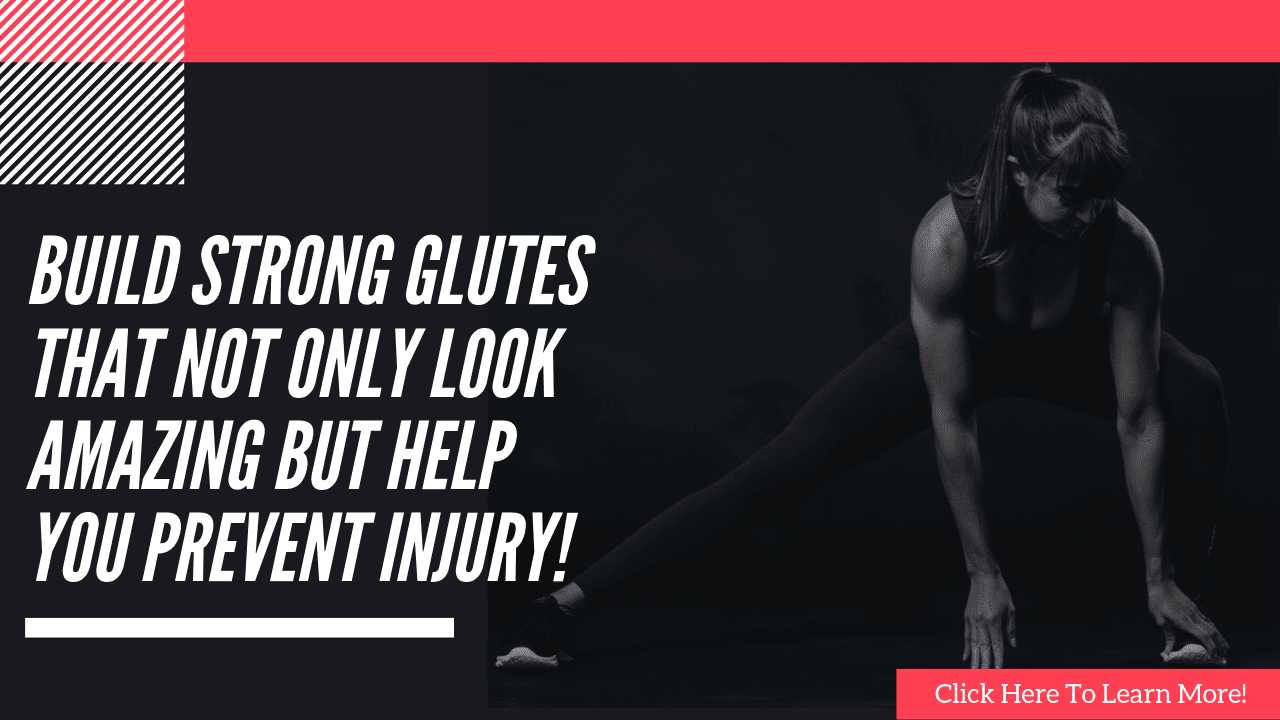


What kind of suspension trainer do you use?
This is the jungle gym xt.